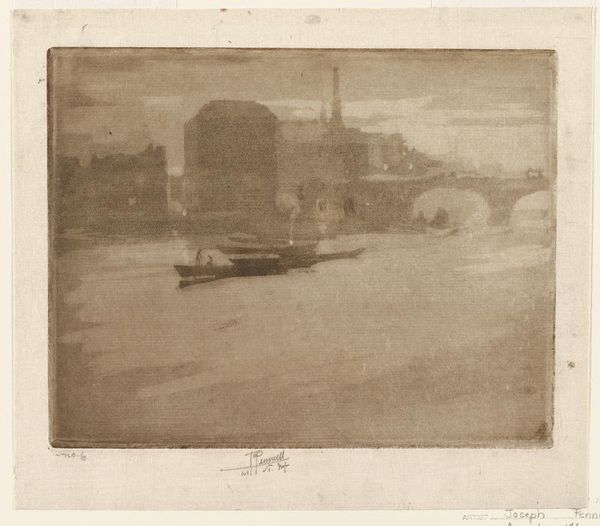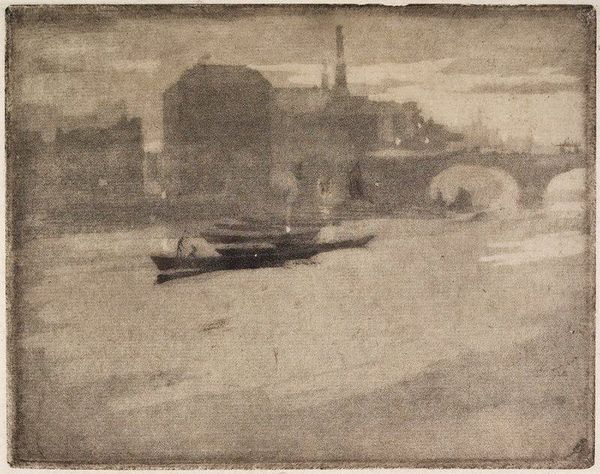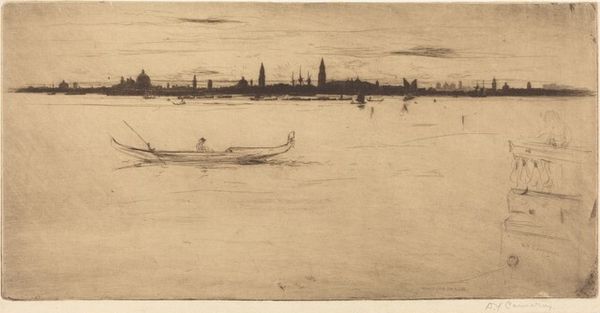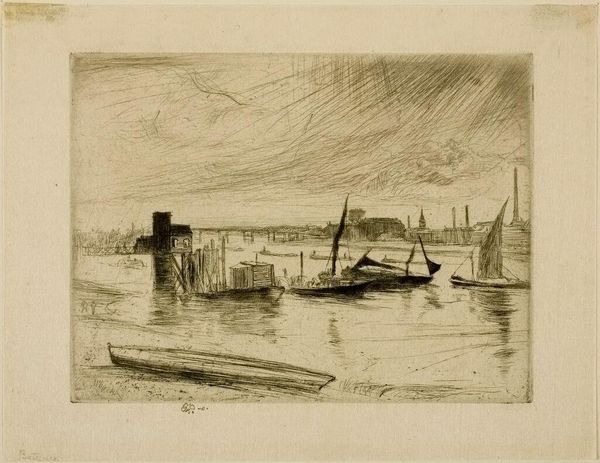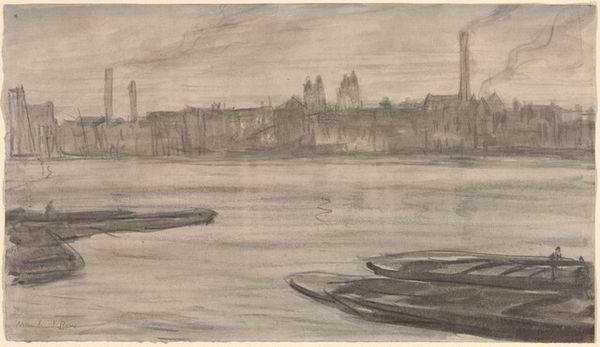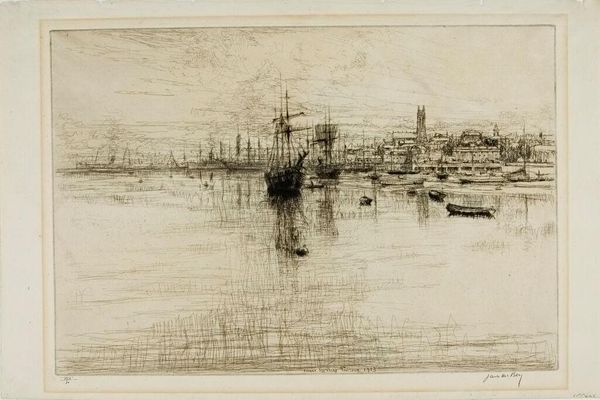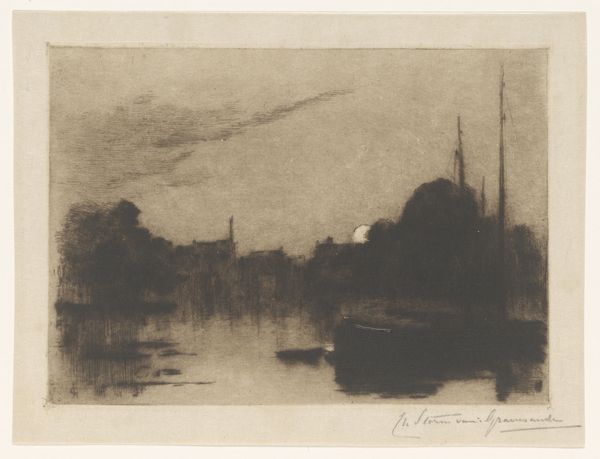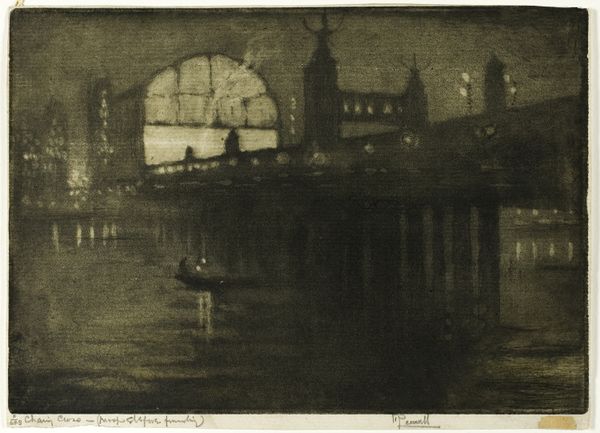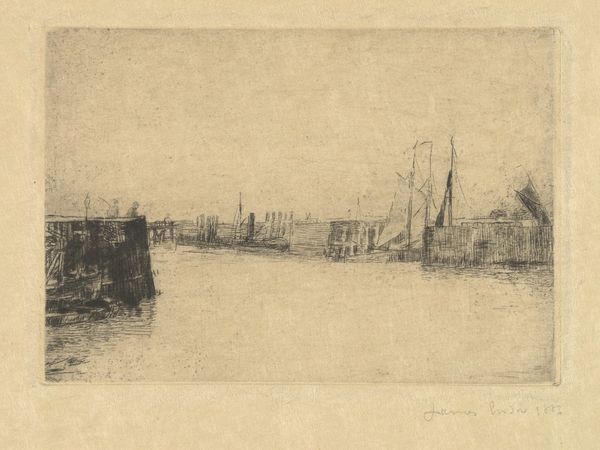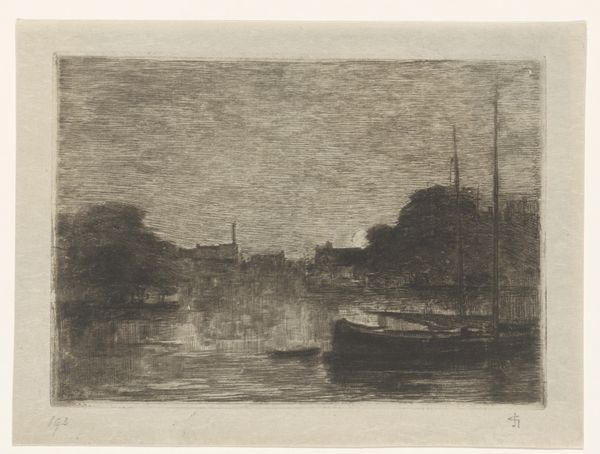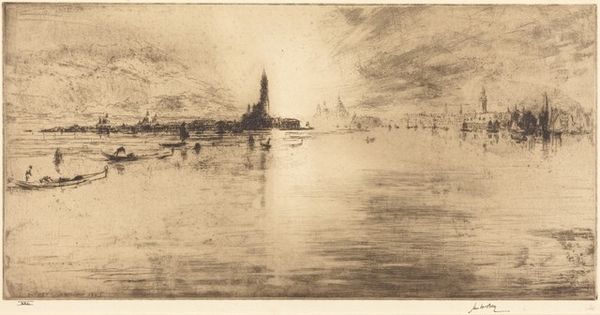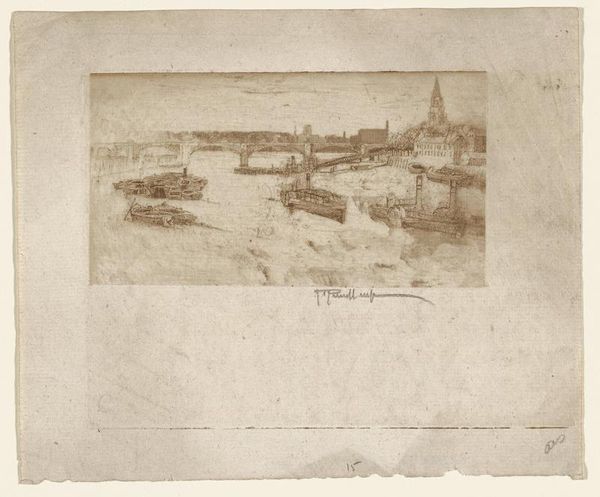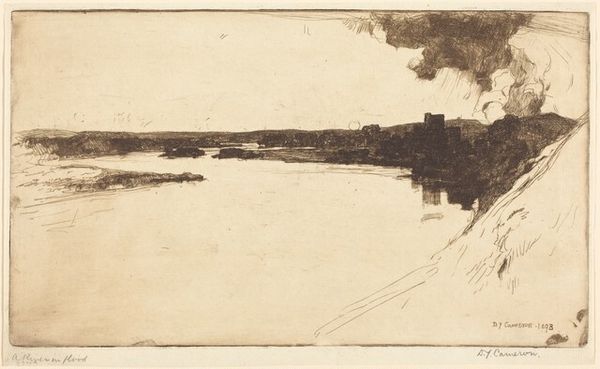
Dimensions: 5 5/16 x 10 1/2 in. (13.49 x 26.67 cm) (plate)14 3/4 x 16 5/16 in. (37.47 x 41.43 cm) (mat)
Copyright: No Copyright - United States
Curator: Here we have Joseph Pennell's "The Thames," an aquatint and etching print from 1894, offering a glimpse of London's iconic river. What strikes you most about it? Editor: It’s…hazy. That monochromatic palette, almost sepia-toned, gives it a muted, dreamy quality. It really evokes a sort of industrial melancholy. You can almost feel the damp air and the grime on those buildings. Curator: Pennell was, of course, working within a particularly turbulent time in London’s history – a city grappling with immense industrial growth and, along with that, significant social and environmental consequences. How do you think this particular aesthetic choice, using these etching techniques, served the politics of this imagery? Editor: Absolutely, the printmaking process itself speaks to that. Think of the labor involved, the acid biting into the plate, mimicking the corrosion eating away at the city's structures. It’s not a pristine, idealized view. There's an emphasis on process, on revealing the grit rather than glossing over it. Even this notion of a multiple challenges the status of 'original' fine art, aligning it closer to labor and reproduction. Curator: And it’s fascinating how the artist chose to represent such a ubiquitous landscape. Pennell could emphasize certain aspects of the city. He used aquatint and etching in such a way as to both showcase the city’s infrastructure as both a hub of commerce and also, a site of potential distress, open to critical consideration of the cost of the late Industrial age. Editor: It's about presenting the materiality of labor within the art itself. From the creation to its ultimate purpose, this piece serves as a political statement about its place of origin and perhaps a critique of high art. It is almost documentary in its stark reality. Curator: Right, but with an impressionistic slant – the vagueness of the structures, of people on the bridge—creating a kind of poetry from the grime. It almost challenges viewers to really consider the unseen elements that compose something as mundane as the bridges and city. It forces the viewer to reflect on their function and construction. Editor: Exactly, that vagueness opens up the narrative, urging us to question what that labor actually means for this place. What seems banal becomes almost elegiac through the hand of the maker, transforming it from documentary to testament. Curator: Looking closer at “The Thames” reveals how deeply entangled art, urbanism, and the social reality of industrial London truly were. Editor: Indeed. It reminds us that art is never divorced from its production and consumption.
Comments
minneapolisinstituteofart almost 2 years ago
⋮
Joseph Pennell evokes complex reactions from connoisseurs of etchings, for he was both a fervent anti-Semite and a master of his craft. He was largely self taught, but acknowledged that James McNeill Whistler was "the greatest etcher of them all… [he] is and always will be my master." The atmospheric tone and choice of subject of this print owe much to Whistler's influence.
Join the conversation
Join millions of artists and users on Artera today and experience the ultimate creative platform.
